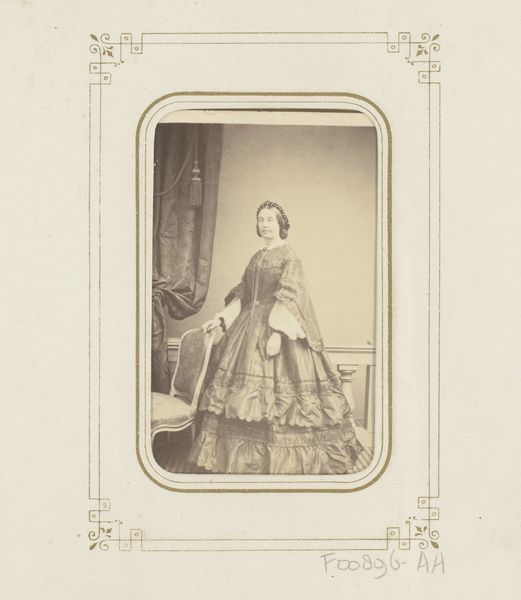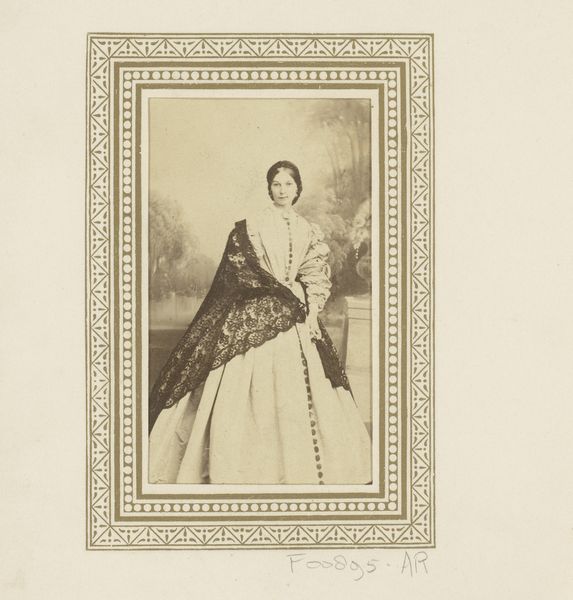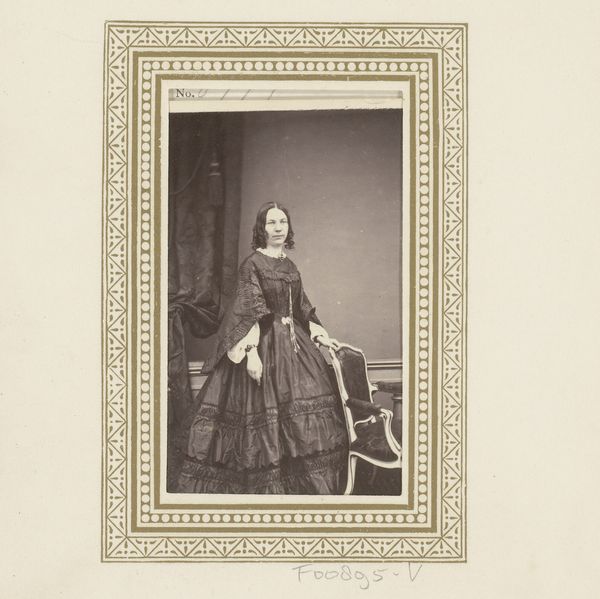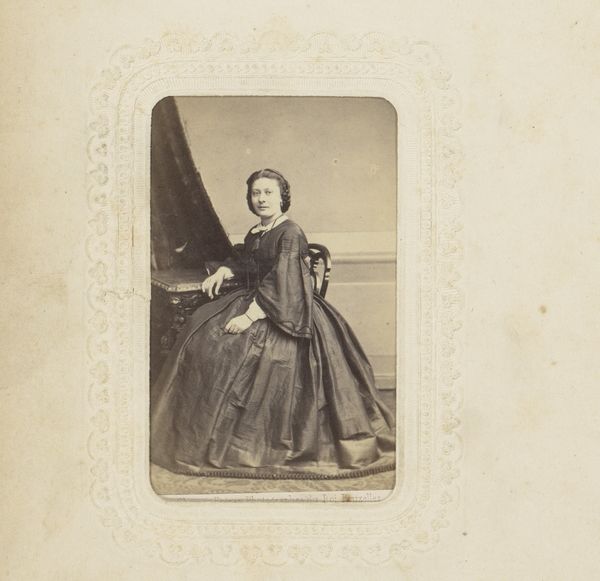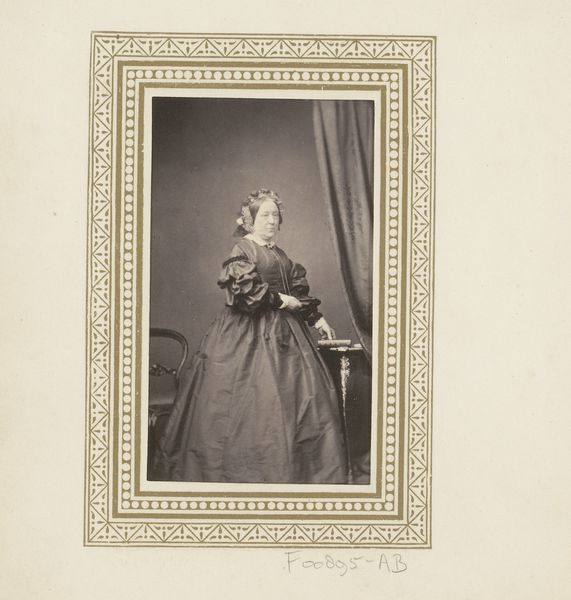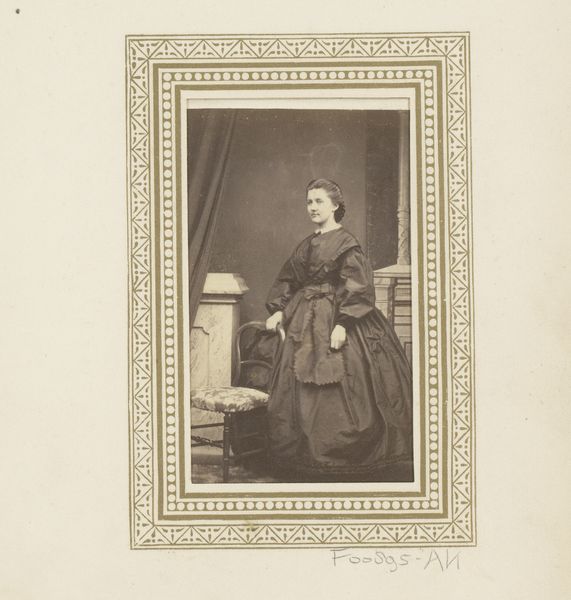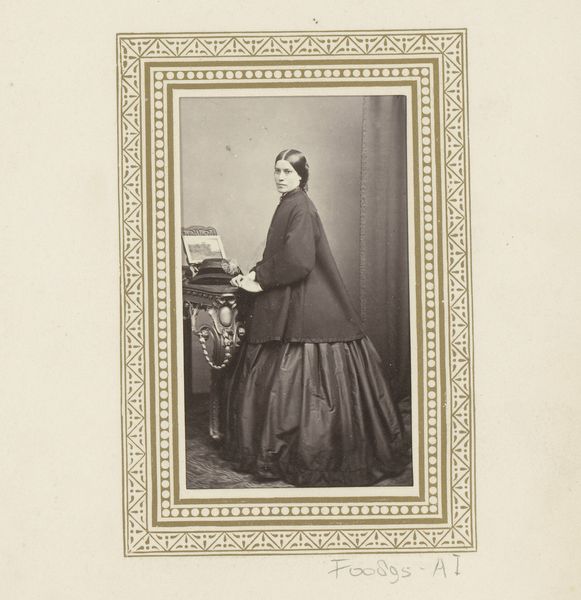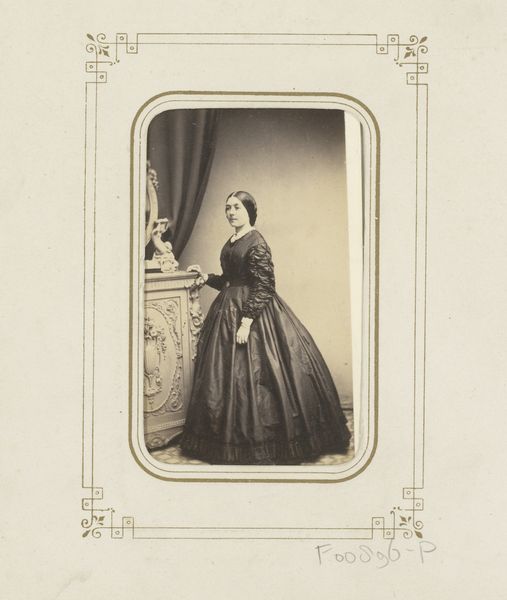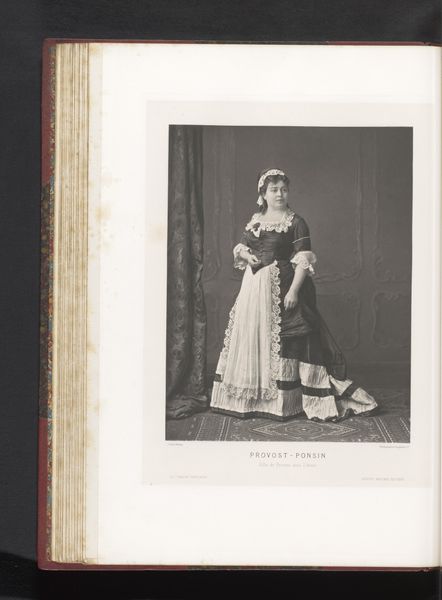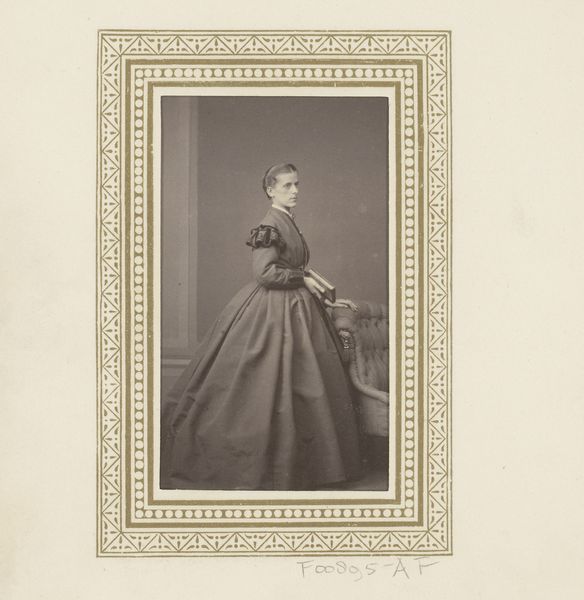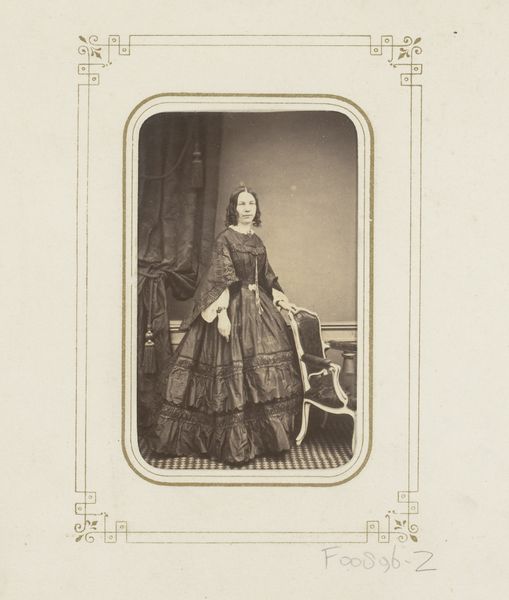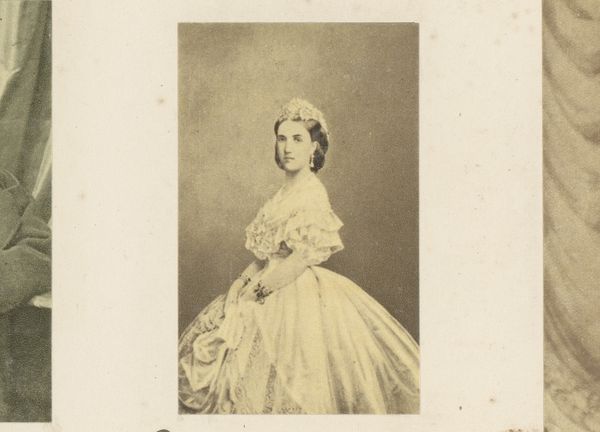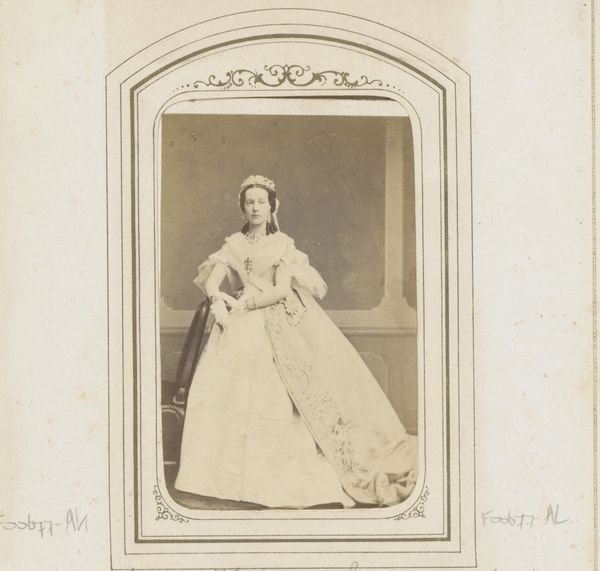
photography, gelatin-silver-print
#
portrait
#
archive photography
#
photography
#
historical photography
#
gelatin-silver-print
Dimensions: height 101 mm, width 62 mm
Copyright: Rijks Museum: Open Domain
Curator: Here we have an intriguing gelatin silver print from somewhere between 1854 and 1890, attributed to the London Stereoscopic Company, simply titled "Portrait of a Woman, Standing by a Chair." Editor: The formality is immediately striking. The fabric of that dress seems almost sculptural; all those heavy folds, layered like geological strata. You can almost feel the weight of it! Curator: Absolutely. Portraiture of this period was heavily influenced by notions of status and representation. Consider the stiff pose, the carefully chosen garments... these images were powerful social markers. Photography studios boomed catering to a desire of a rising middle class to imitate aristocratic norms. Editor: And yet, thinking about that photographic process, the sitter's stillness becomes less about social climbing and more a matter of technical necessity, doesn't it? Imagine the labor, the slow exposure required of a wet collodion process versus later easier methods. Did it impact the style we see developing? Curator: That’s a great point! Early photography placed certain physical demands on the sitter that were slowly relaxed as technologies advanced. The rise of carte-de-visite portraits like this, for example, fuelled a boom in commercial studios which, despite democratizing portraiture to a degree, created a whole industry shaped by consumption and idealized aesthetics. Editor: Looking closely, the subdued palette also hints at the limitations of early photographic chemistry, before color photography became truly accessible, right? All those monochrome nuances achieved using different metal salts… There's beauty in the process, in its deliberate materiality. Curator: Yes, and how these material limitations and the increasing public appetite for portraiture influenced social performativity— the way people wanted to see themselves represented! Even the choice of that chair becomes an important contextual element. It's not merely a prop; it signifies status. Editor: Seeing the details like that helps strip away some of the nostalgic glaze, really highlighting this portrait as an active construction. Curator: Precisely. The image embodies so many complexities inherent in the era. It reminds us of the many social and technical conditions surrounding a portrait, not just a quest for simple mimesis. Editor: The labor involved in crafting that dress and in creating the image are things to consider equally! Curator: I'll certainly leave this image with a renewed focus on materiality in mind. Editor: And I appreciate that we examined a formal historical approach for our perception! Thank you.
Comments
No comments
Be the first to comment and join the conversation on the ultimate creative platform.
